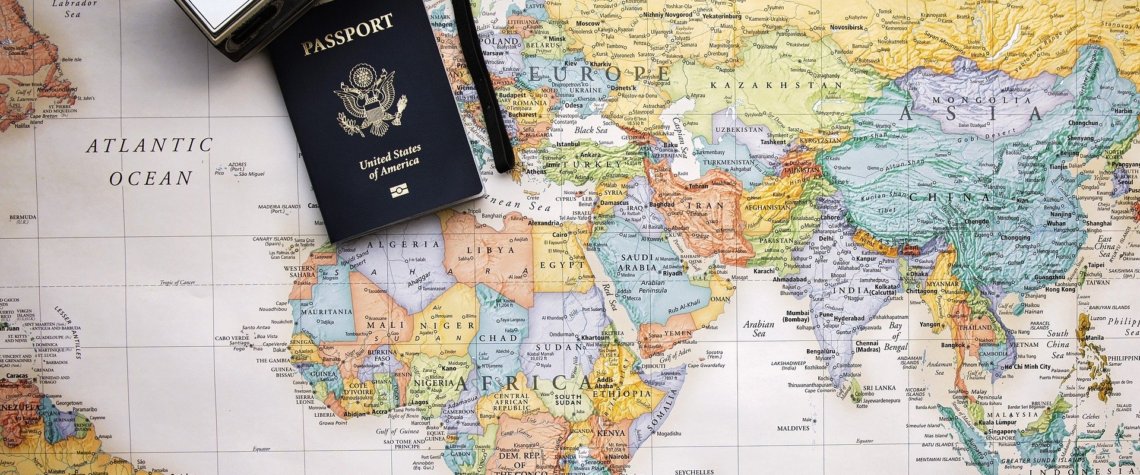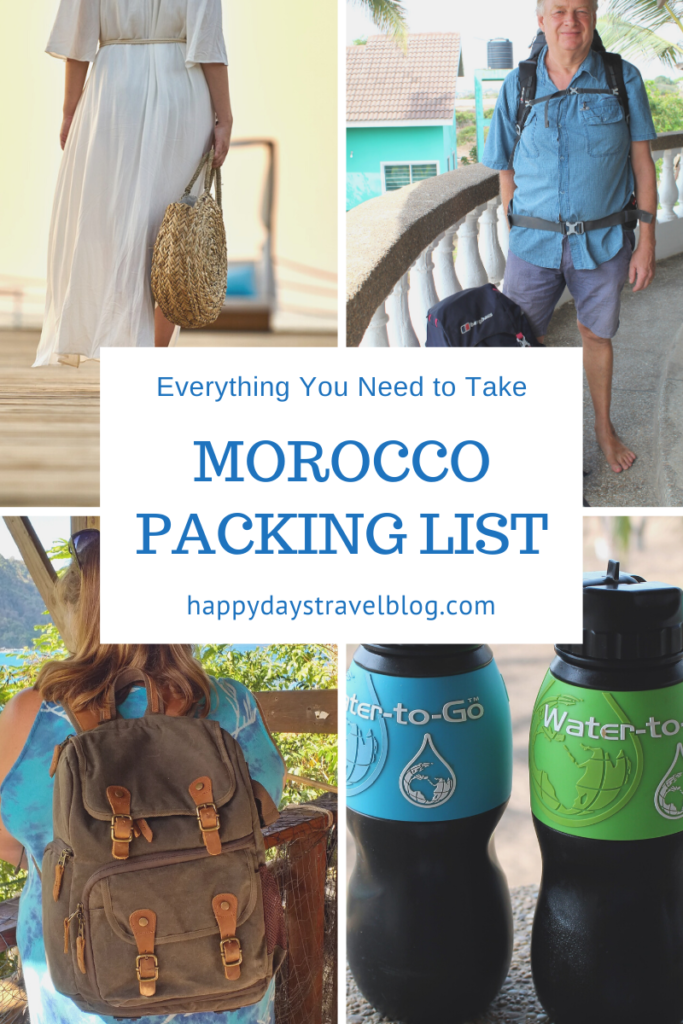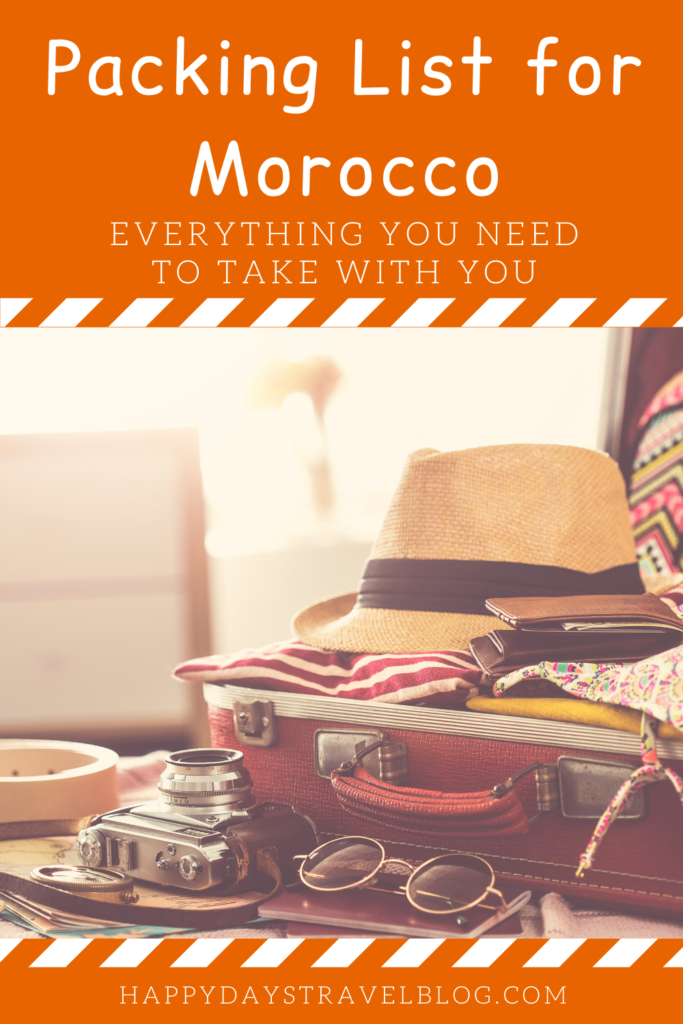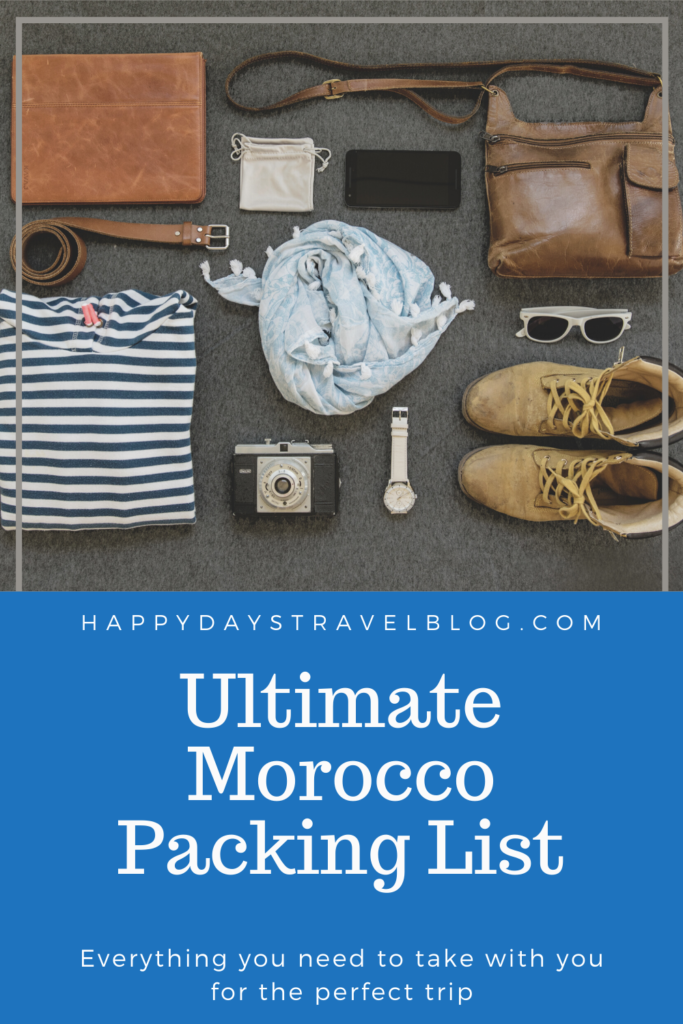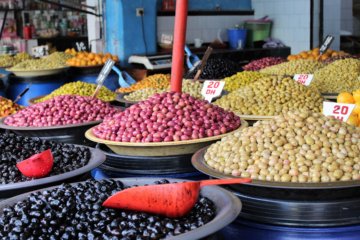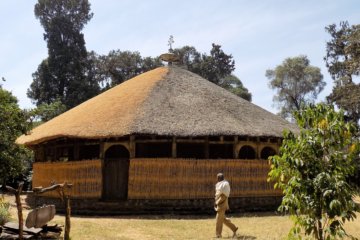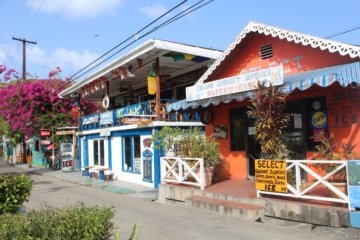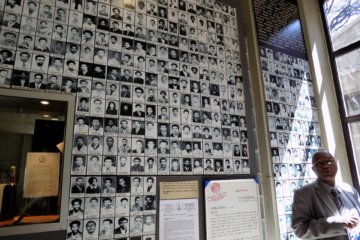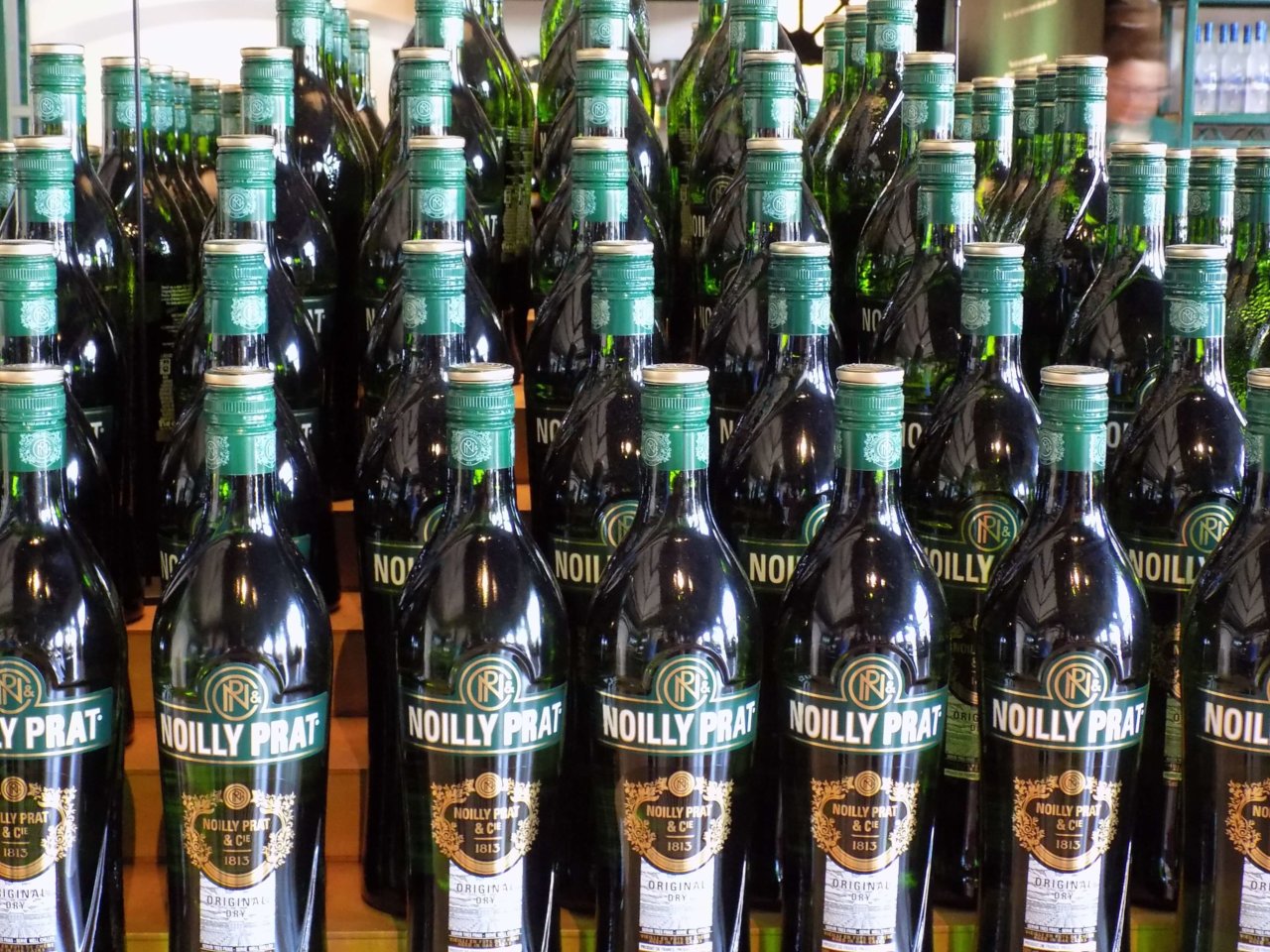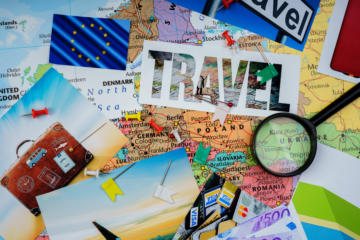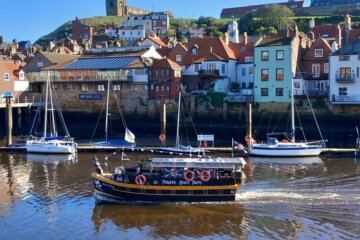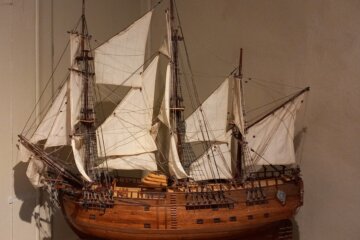Welcome to my Morocco packing list.
For me, the key to packing for any trip is to take as little as possible to keep yourself fed, watered, safe, healthy, warm, dry, and entertained. Remember that you will have to carry all that you decide to take with you. If like us, you’re on an overlanding tour around Morocco, there won’t always be staff on hand to help with your bags.
Read my packing list for everything you should take with you to Morocco.
In this article
Take a Backpack!
Overlanding is not a luxurious way to travel! It’s unlikely that you’ll be whisked from place to place in a chauffeur-driven limousine. Outside of the major cities, the road surfaces are often potholed. You’re likely to be walking over rough ground. Even for short distances, this makes a case with wheels a hindrance rather than a help. The first item on your Morocco packing list should, therefore, be a backpack! Consider taking a one, even if, like us, you’re of a certain age and may think that your backpacking days are over! The advantages of a backpack are:
- No wheels to get stuck on rough ground.
- You’re less likely to take too much because you have to be able to hoist it onto your back!
- It keeps your hands free to deal with money, tickets, etc. You don’t have to leave it unattended.
- It’s brilliant when you need to go up and down stairs! It’s not easy to drag a wheeled case up or down steps.
- A backpack generally has lots of handy pockets and compartments so you can find things easily without having to empty the entire contents of your suitcase!
Mark and I both use Berghaus Trailhead backpacks. I have the 60-litre women’s version and Mark has the 65-litre men’s version. We bought them three years ago and have used them on long trips to Ethiopia, India, the Caribbean, West Africa, and, now, Morocco. They have been on multiple flights (including getting lost in Istanbul when we were in Addis Ababa!) and on and off public transport. They have been used as improvised seats during long waits at railway stations. They have been thrown on and off overlanding trucks in both East and West Africa. After all this, they still look pretty good! There are no holes or tears. I’m sure they’ve got a good few trips in them yet! I particularly like the Biofit system that they have. You can adjust them, depending on your body size, from small to extra large, meaning that they feel really comfortable, no matter how big or small you are.
If you’re still averse to the idea, buy a backpack with wheels and have the best of both worlds. The one shown here is not one that we have used personally, but it is favoured by a friend of ours.
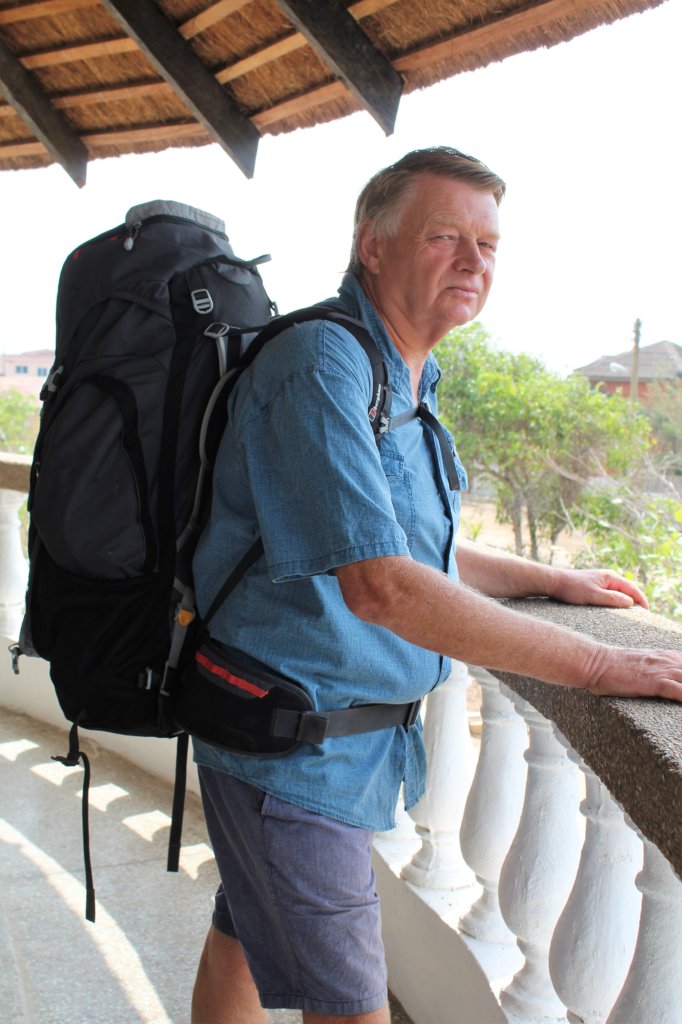
Day Pack
Your Morocco packing list should also include a day pack to carry your essentials for each day – water, camera, etc.
I have recently changed from this canvas backpack to this one. I still love the old one, but I needed to replace it as, after an awful lot of use, the carry handle had started to split. I was going to get exactly the same bag, but then I came across this alternative. It’s perfect because it comfortably holds all the extra camera gadgets I’ve recently acquired, as well as my laptop. The top compartment is accessed separately from the bottom one and the laptop space is hidden in the back, accessed by a zip which is totally separate from the rest of the bag. The dividers in the camera section are attached with Velcro® so you can adjust them to suit your requirements. You can also get your camera in and out of your bag through the side, meaning that you don’t have to take your pack completely off! I also love the colour and the fact that it already looks well-used (Indiana Jones style!) even though it’s new!
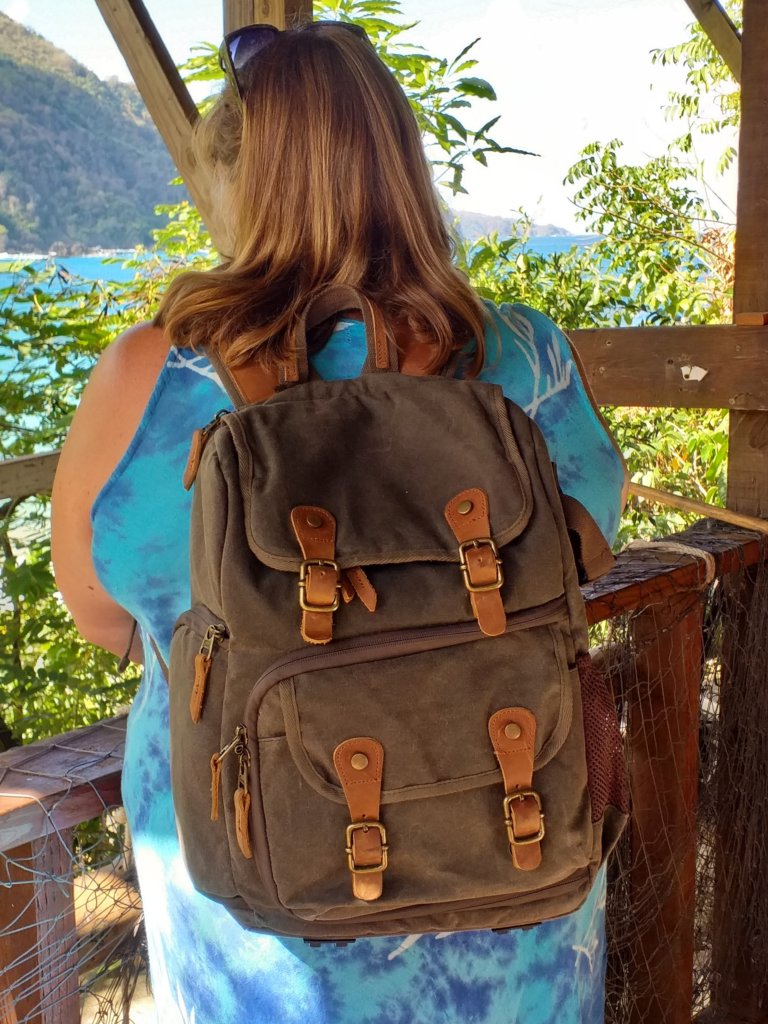
Mark uses a Berghaus 20-litre daypack. He tends to carry the water for both of us as I’ve got the camera equipment!
We use combination locks for both our backpacks and our daypacks. Whilst it doesn’t stop someone stealing the whole bag, it does prevent opportune thieves.
Travel Documents
- Passport
- Travel insurance and policy number (have a hard copy in your wallet and an e-copy on your phone or tablet).
- 24-hour emergency contact number
- Flight tickets or e-tickets (if you only have e-tickets, make sure you have downloaded them so that you can access them offline, and that you have put them in a folder where you can find them easily).
- Trip or accommodation voucher if applicable.
- Photocopies of all important documents (hard copies and e-copies).
- Spare passport photos.
- Youth/student/seniors card for travel discounts – whichever is applicable!
- Driving licence as an extra form of ID if you lose your passport.
- International driving licence if you plan to hire a car.
- Money (cash and cards).
- A money belt
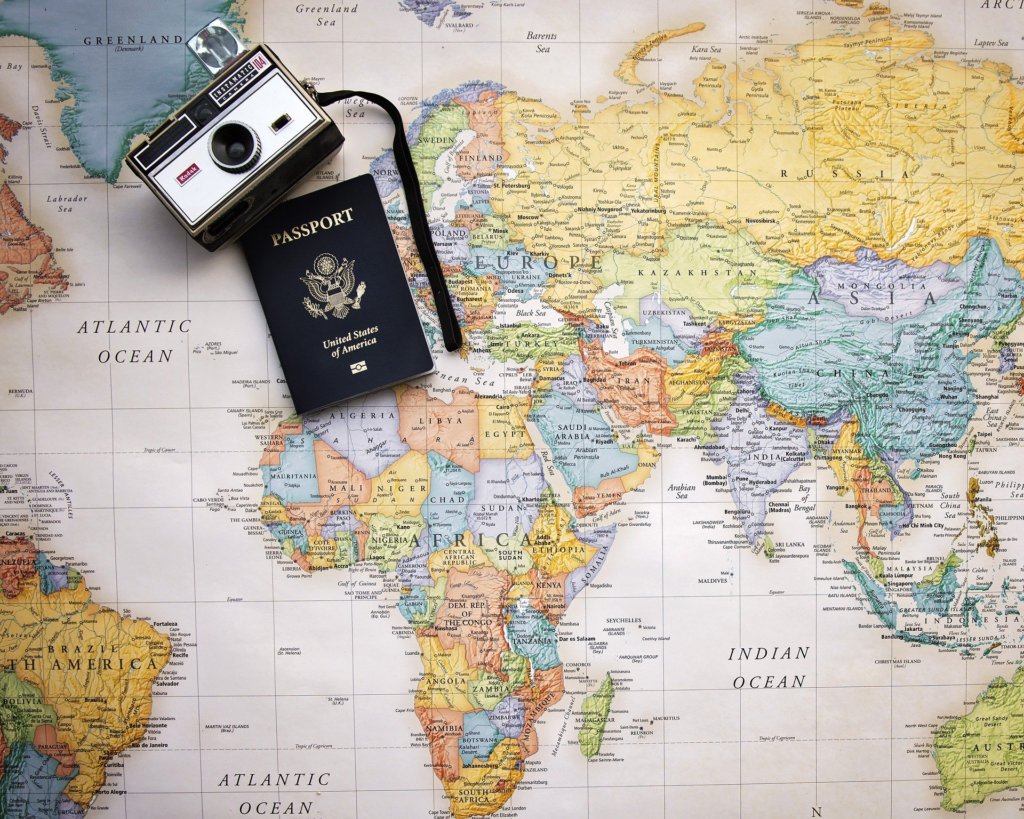
Clothes
Morocco is warm all year round, but if you’re there in winter, you will need a sweater and/or jacket for the evenings. You should pack these at other times of the year, too if you are going into the mountains. It’s a good idea to take walking shoes or boots as there are lots of opportunities to go hiking and trekking.
Whilst it is acceptable for both men and women to wear shorts in tourist areas, it is advisable to dress respectfully and conservatively when you are travelling in Morocco. This especially applies when you are walking through cities such as Marrakech, Fez, Rabat, and Casablanca, and when you are visiting religious sites like Moulay Idriss. Lightweight long trousers or skirts teamed with long-sleeved, loose-fitting shirts are always acceptable. Make sure you wear natural fibres – cotton, silk, and linen – to remain cool even when the temperature soars. If you adopt this dress code, you will feel more comfortable and you won’t draw undue attention to yourself. Women, especially those travelling alone, should be particularly careful about what they wear. They should always carry a scarf to cover their heads when visiting places of worship.
With a view to keeping your baggage weight down, think carefully about packing a capsule wardrobe based around one or two coordinating colours so that you can mix and match trousers, skirts and shorts with tops. Neutral colours are best. Avoid anything too bright (no neon!). You want to blend into the crowd rather than stick out like a sore thumb!!
Unless it is a very short trip, don’t think about how long you’re going for. Whether you are away for a week or for three months, you should pack just so that you have enough clean clothes for several days and make sure you get your laundry done as you travel. With this in mind, choose clothing that is easy to wash and fast drying. This is what I recommend you take:
- 1 warm jacket, sweater or fleece if you feel the cold (even if you only need it at the airport when you get home!).
- 1 rain jacket.
- 2 long-sleeved cotton shirts or tops for daytime in cities and evenings when mosquitos are about.
- 2 pairs of long, loose-fitting cotton trousers for the same reason and, perhaps, for hiking in the High Atlas.
- 2 pairs of shorts or skirts.
- 2 T-shirts/short-sleeved cotton shirts.
- 1 pair of swimming shorts/swimming costume.
- Socks and underwear for a week.
- 1 set of nightwear.
- 1 scarf (women).
- 1 sunhat or cap.
- 1 pair of sunglasses.
- 1 pair of comfortable walking shoes or boots with a good grip.
- 1 pair of sandals as an alternative to walking shoes.
- 1 pair of flip-flops.
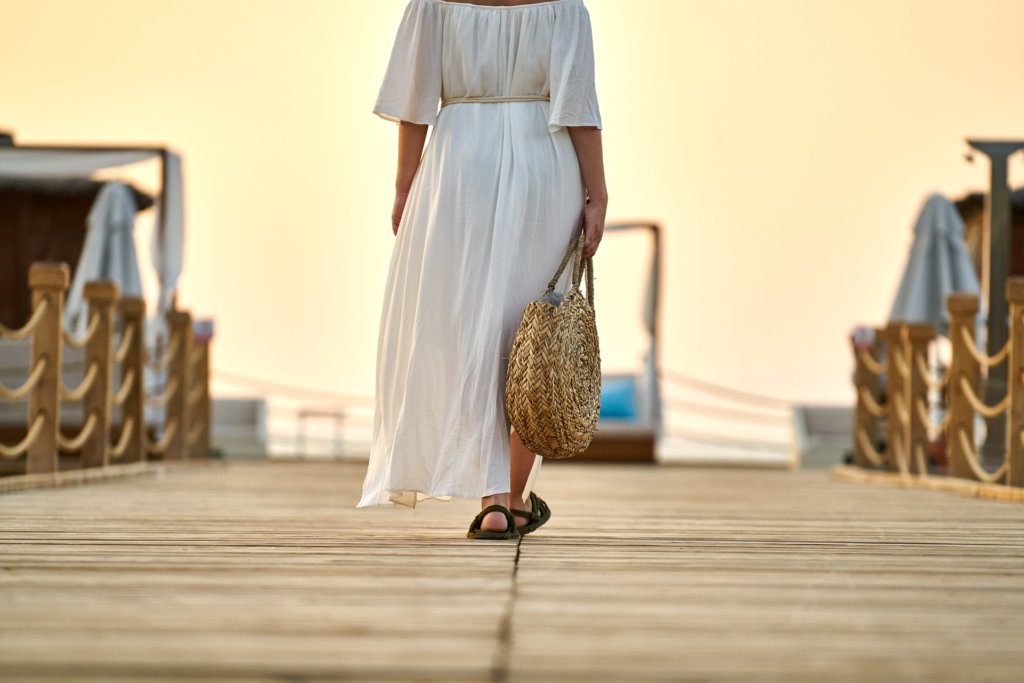
Toiletries and Personal Health
As with clothes, when it comes to toiletries and medicines, you can’t possibly carry enough to last you for a long trip. There are shops in Morocco! You may not be able to buy the exact brand you want, but you will be able to get something that does the job. Obviously, the exception here is prescription medication – make sure you get enough from your GP to last your entire trip and take your prescription with you in case of emergency or if you are asked to prove what your tablets are for.
Your packing list for Morocco should include:
- Shampoo/conditioner/soap/shower gel/shaving foam – we use solid bar toiletries wherever possible to cut down on plastic and, also, because you can take them in your hand luggage without question. Lush has some very good products, as do many small independent producers.
- Deodorant – we use roll-on as it takes up less room
- Shaving equipment
- A mirror – it’s surprising how many bathrooms in Morocco don’t have one!
- Make-up – only if you really can’t live without it!
- Lip balm with sun protection
- Sunscreen and after-sun
- Prescription glasses/contact lenses (I’m not a contact lens wearer, but those on our Morocco tour who were said that they couldn’t wear them because of the dust in the air – they were all glad they’d brought their glasses as well!
- A first aid kit
- Personal medication/prescriptions
- Insect repellent – we took this one with 50% Deet which worked very well
- Antihistamine/insect bite cream
- Antibacterial hand gel
- Baby wipes – there are no showers in desert camps!
- Travel sickness tablets if you need them
- Painkillers
- Anti-diarrhoea pills
- Rehydration tablets – these are so useful when you are in a hot climate. We take lemon-flavoured O.R.S. – they taste pretty good!
- Earplugs and/or an eye mask – Moroccan towns can be pretty noisy late into the night and black-out curtains haven’t been heard of so these things might be useful to help you get a good night’s sleep.
- Travel pillow – personally, those specially-shaped, around-the-neck ones don’t work for me so I just carry an inflatable rectangular pillow.
Practical Stuff
- A universal travel adaptor – the electricity supply is 220V and plugs are either Type C which has two round pins or type E which has two round pins and a hole for the socket’s male earthing pin.
- A head torch and a flashlight with a hanging hook and a magnetic base – especially useful if you’re camping in the Sahara.
- Swiss army knife
- Water filter bottle – we swear by these! We no longer have to buy plastic bottles of water when we travel.
- Travel towel for those impromptu swims!
- Sewing kit
- A universal plug for sinks – in Morocco, sinks often don’t have plugs. One of these will be invaluable.
- Travel washing line – we always have one of these with us. You can fix it virtually anywhere and there’s no need for pegs – perfect for when you’ve done some hand-washing.
- Travel wash – we take a tube or two with us when we go on a long trip. If we run out, we buy small sachets of washing powder which are readily available.
- Reusable shopping bag to reduce the amount of plastic you use.
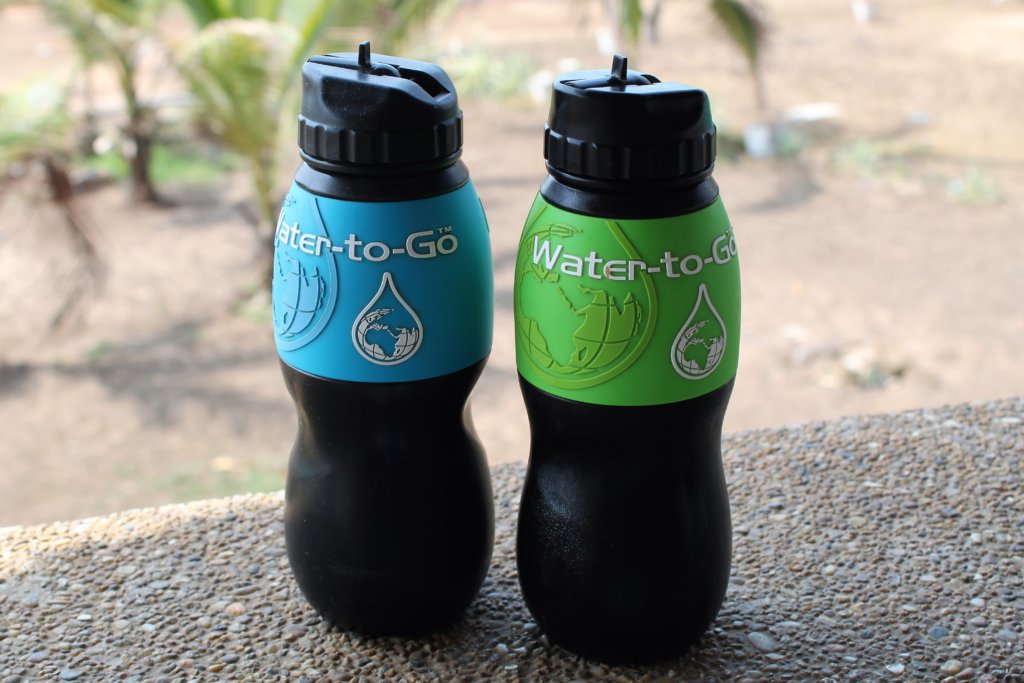
Sightseeing and Entertainment
- Mobile phone
- Tablet/Kindle/laptop
- Camera equipment
- Memory cards
- Spare batteries/charger
- Binoculars – there’s so much birdlife in West Africa!
- Guide book
- Personal entertainment – music, reading material, playing cards
- Journal and pens
READ MY COMPLETE MOROCCO TRAVEL GUIDE
Check out my Morocco colouring books!
Unlike most colouring books on the market, mine, suitable for both adults and older children, are full of line images created from photos I have taken on my travels. This means that they are highly detailed. They are not line drawings where you can colour between every line. The pictures invite you to be creative. Apply a colour wash with watercolour. Use coloured pencils to create texture. Blend colours together. Add detail with a fine ink pen. The choice is yours! Create your own work of art! When you’re happy, remove it from the book. Stick it on the fridge as a reminder of a place you’ve already been to or somewhere that’s on your bucket list. You could even get it framed. Display it on the wall for people to admire.
Here is a selection:
If you like what you’ve read, PIN IT!!
If you’re travelling soon, please use these links!
Are you travelling soon? Use these links when making your bookings. These are the companies we use. It won’t cost you any extra, but we will earn a few pennies to help keep Happy Days Travel Blog going. Thank you!!
- Book your travel insurance with World Nomads (Never leave home without protecting yourself, your trip and your belongings!)
- Book your flight with Skyscanner
- Book your accommodation with Booking.com
- Book a tour with Tour Radar or Intrepid Travel
- Book city tours and activities with Get Your Guide
Disclosure: This post contains affiliate links. If you click through for more information, or to make a purchase, it may result in a small commission coming my way. Please note that there is no extra cost to you associated with this. Thank you so much for supporting my site.
Join our mailing list

Sign up to receive our monthly newsletter. Keep up with what we're doing and be the first to receive special offers and insider tips.

